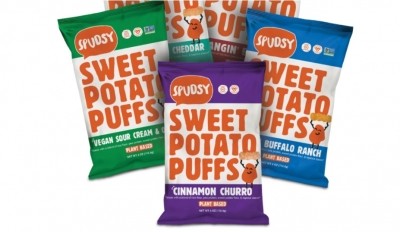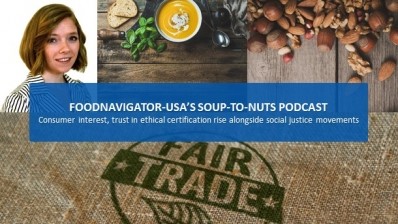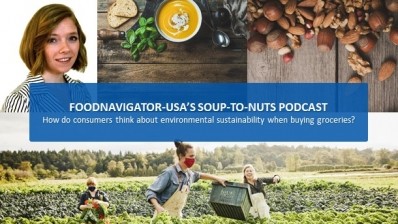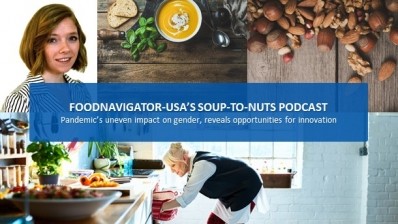Soup-To-Nuts Podcast: QVC, live-streaming help brands drive discovery, trial among at-home shoppers
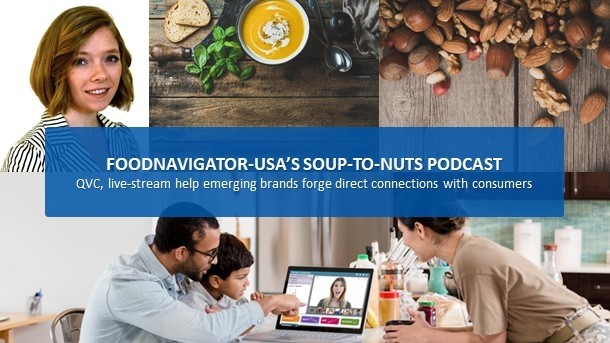
As it becomes safer to venture out of home and shop in store, live stream and home shopping still holds significant appeal, as illustrated by retail analytics firm Coresight Research’s sales projection. It estimates that live-stream shopping events generated roughly $5.6bn in sales last year across categories, and is projected to grow to a whopping $26bn by 2023 – in part because the channel offers convenience and operates as a guided treasure hunt that makes discovery easier.
But with so many streaming services, entertainment options and increasing in-person shopping options, capturing and keeping consumers’ attention requires finesse and generating the high-level sales volume demanded by the channel takes a lot of legwork before and after airing.
To find out what it takes to succeed in this fast-paced channel, this episode of FoodNavigator-USA’s Soup To Nuts podcast features stories and advice from three food and beverage brands recently featured on the home shopping channel QVC, including RightRice founder and CEO Keith Belling, Rind Snacks founder and CEO Matt Weiss, and Otamot Foods founder Andrew Suzuka.
[Editor’s note: Never miss another episode of FoodNavigator-USA’s Soup-To-Nuts podcast – subscribe today.]
QVC is a “really powerful platform to demonstrate what makes a product special”
Once reserved for only high-end, niche brands or played for background noise on television sets of baby boomers and their parents, home shopping shows and livestreams are gaining new traction among consumers as they deliver an attractive combination of multi-media entertainment, interactivity, convenience and safety in an era of social distancing.
RightRice founder and CEO Keith Belling explains that QVC “has changed a lot over the years” and is now a premium “discovery channel” that can help emerging brands build awareness in a way that more conventional channels can’t.
“Over the past several years, they’ve done a really great job of expanding the product assortment and the food world to a lot of products you find in most grocery stores. And the reason it has worked is they have this really powerful platform to demonstrate what makes a product special, and they have given emerging brands this really special, unique platform to tell their story,” he explained.
He added that RightRice saw this first hand when it sold out of product within a matter of minutes of its first segment and generated a waiting list of 25% more buyers despite airing at 8 am ET on New Year’s Day – a time when Belling thought many people might still be asleep after the previous night’s festivities.
Rind Snacks founder and CEO Matt Weiss also participated in QVC’s New Year’s day Powered by Plants segment that featured RightRice, and he echoed many of Belling’s sentiments – underscoring the channel’s potential as part of a broader omnichannel approach.
“There is more and more of a younger, more progressive audience that is choosing to discover brands through QVC,” making it “another creative funnel that was important to our omni-channel strategy” along side subscription boxes, and other alternative distribution channels that gained popularity during the pandemic when shoppers were hesitant to visit stores, he said.
Otamot Foods founder Andrew Suzuka, who has been on QVC 16 times, adds that the channel is akin to instore demos in the connections it allows brands to forge directly with consumers – but at a significantly higher magnitude.
“QVC does an amazing job of connecting humans together, connecting emerging brands with people that are looking to hear stories an support the Davids in a Goliath filled world,” Suzuka said.
Live-streaming, QVC combine marketing and sales
Even though QVC’s velocities, metrics and sales reach far outpace that of many individual retail banners, as Suzuka notes, Weiss cautions that brands shouldn’t think of the channel primarily as a sales outlet. Rather, he explains, home shopping and live streaming straddle sales and brand building, and therefore their impact falls on both sides of the ledger.
QVC is “huge for awareness building and it’s huge discovery for your brand by a large audience an with a giant reach,” but because value is paramount for the QVC shopper brands must offer “very sharp pricing” and may need to offer unique pack sizes and product mixes that squeeze already tight margins, Weiss said.
“I think brands need to understand that this fits into their overall sales and marketing strategy, but should not be on its own viewed as a going to drive X amount of bottom line contribution to the year’s profits, because that is really not what I think the QVC platform is about. I think it is much more about brand building,” he said.
Maximizing QVC’s impact
Operating within the framework that QVC and live streaming are brand-building opportunities, RightRice’s Belling recommends that companies need to work with a broker and on-air representative who can help position them for both storytelling and sales success.
He explained one of the best steps that RightRice took was to find a good QVC sales manager or broker “with deep experience and success on QVC” both as a buyer and as a brand representative.
The next most important component was tapping a brand ambassador who has an authentic connection and deep passion for the brand who can showcase a product’s uses and communicate the taste and eating experience through visuals and storytelling.
While RightRice brought on a trained chef to showcase its product on QVC, Belling said he has seen many founders and executives successfully represent their brands on the channel. But, no matter who represents the brand on QVC or another live-streaming event, Belling says the messaging must be tightly focused. Because while seven to 10 minutes may sound like a long time to fill, the time flies and overly complicated messaging can bog down delivery and slow sales.
Rind Snacks’ Weiss adds that messaging should focus on the brand’s story and the taste or eating experience of the product.
Preparing to go live
Just as important as preparing messaging for QVC and live-streaming is preparing inventory and product mix – which Weiss notes is a different animal compared to more traditional retail outlets in part because brands must have massive amounts of inventory on hand and because QVC shoppers are very value focused.
“It took a lot of stamina and patience because you are getting together a significant amount of pre-determined volume of product,” and you might not know the variables and data points if you haven’t presented on-air before, he noted.
“You want to err on the side of having enough product to fulfill orders,” and have a selection that will appeal to consumers, he added.
Ensuring sufficient inventory and lining up fulfillment ahead of airing a segment is hard and is requirement before brands can go live on QVC, but it also lightens the load after the segment runs, which is when Weiss said the “heavy lifting” starts.
Leveraging a successful segment
He explained that most product ships within days of the segment and immediately after that consumer feedback comes pouring in – providing a wealth of data that needs to be mined.
According to Otamot Foods’ Suzuka brands can further magnify the impact of a successful segment on QVC or live stream by leveraging the sales number, consumer feedback and more to gain shelf space and opportunities with other retailers across channels.
“When you’re able to tell a retailer, ‘Hey, we just sold 20,000 units in eight minutes on QVC,’ that’s saying something,” and cannot be replicated at any other retailer, he said.
Likewise, brands can share consumer feedback and response to new products for which a company might not have other data yet – helping it land shelf space, he said.
Ultimately, while promoting a brand over live stream of home shopping channels like QVC may not be fo everyone and can be a heavy lift – especially the first time – it also can have a tremendous marketing and sales impact, as illustrated by the experiences of these three brands.
